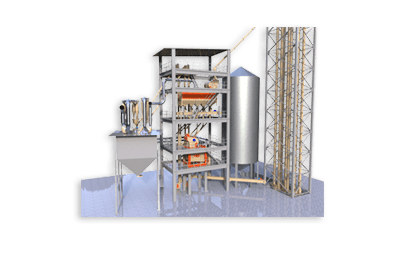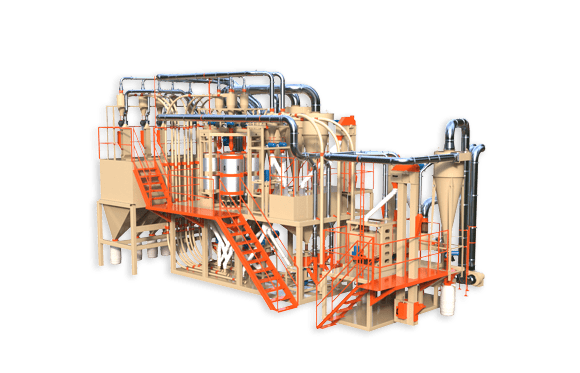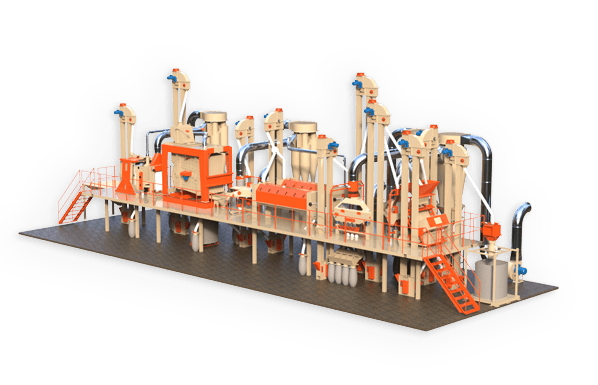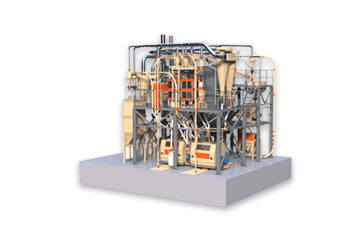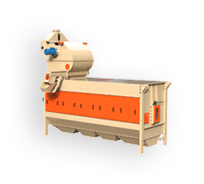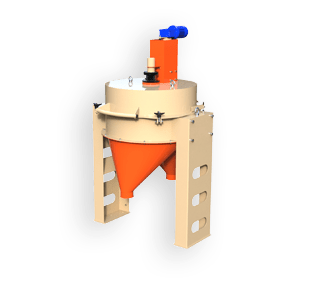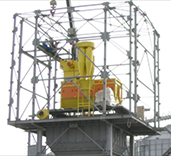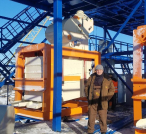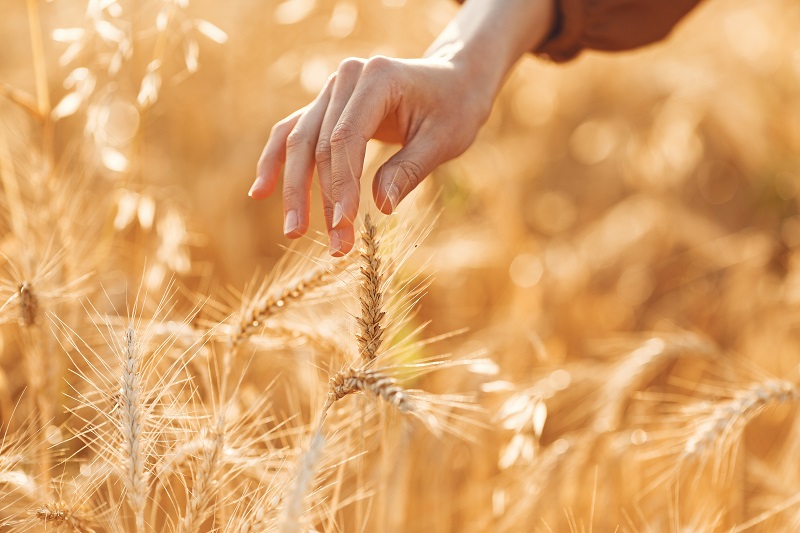Vereshchinsky A.P. – General Director of “OLIS” LLC (Odessa), Doctor of Technical Sciences.
On behalf of myself and the company “OLIS” let me welcome you to the international conference “Flour and cereals: raw materials, market, technologies”. Without doubt, this forum is one of the most expected and important events for all those who work in the field of grain processing. We hope that exchange of opinions and information within the framework of this conference will allow all of us to find new ideas for the development of our business.
It is absolutely obvious that in the near future grain processing will be actively developing in Ukraine and most enterprises will face the tasks of reconstruction of existing production capacities and creation of new ones. In this hall there are owners, managers and specialists who will have to solve these tasks. The success of your enterprises and the industry as a whole depends on your decisions. Your choice of technologies and equipment will determine how soon your enterprise will work for you and not for repaying bank loans and financing other people’s development.
In my report, I will present our vision of the current state and trends in the development of flour production technologies, as well as talk about the methods developed and implemented by our company to improve their efficiency. I hope that the information provided will help you find solutions that will be maximally effective for your enterprises in today’s business environment.
As is known, depending on the structure development, wheat milling varieties are divided into milling with developed and reduced structures. The milling with developed structures implies grain processing with the use of the maximum arsenal of technical means. Such mills are mainly realised for large capacity mills. They are characterised by high establishment and operating costs. As a rule, mills with a smaller capacity, in which production processes have been reduced to a greater or lesser extent, are realised in reduced structures. These mills are characterised by lower set-up and operating costs. It is generally assumed that mills with developed structures provide maximum flour yield and quality, while mills with reduced structures do not have high yields and flour quality as insurmountable problems.
In the framework of traditional technologies, the main structural differences in milling are mainly manifested at the milling stage, while at the preparation stage such differences are not always significant. Nevertheless, in modern economic conditions, a number of widely used earlier operations of grain preparation for milling have lost their relevance. For example, selection of fine grain fraction is rarely used, as it entails irreplaceable losses of valuable raw materials. Washing and wet grain surface treatment are hardly used anymore, due to environmental problems of water use and the availability of effective “dry” cleaning methods. Hot conditioning methods are also not used due to the high cost of energy. Therefore, today grain preparation even in developed structures includes grain cleaning in sieve-air separators, triers, stone pickers, concentrators or combiners, surface cleaning in rinsing machines and multi-stage cold conditioning.
In developed structures, the essence of grain milling is as follows. The grain is pre-milled to form intermediate products, i.e. particles larger than flour. The resulting intermediate products are then separated by quality and further milled separately into flour. Enriched products with a high endosperm content form high quality flour streams, which should be used to form high grade flour. Depleted products with a high shell content produce flour streams of lower quality, which should be used to form lower flour grades. Let’s see how this works in practice.
On slide 1 is a simplified structural diagram of a mill with complete equipment with a capacity of 250 tonnes per day. The given data show that about 32 % of flour of the highest grade can be formed from the flour streams obtained as a result of milling of enriched products. Despite the high quality of such flour, it is too small to meet the market demand for premium flour. Therefore, in any mill, 20 %, 30 % or more of flour obtained from the milling of intermediate products with a high shell content and even from the dredging process are added to such flour streams to bring the yield of top grade flour to 50 %, 60 % or more. The quality of such flour streams is much worse and is characterised by ash content values above 0.58%, i.e. values that are significantly higher than the maximum permissible value for top grade flour. Thus, contrary to the logic and common sense given earlier, flour streams that have been artificially improved and proportionally artificially worsened are mixed together at the stage of formation of flour grades. What are the conclusions that follow from this?
On slide 2 there are graphs of dependence of cumulative values of ash content of flour on its yield. Diagram 1 is based on the data of grinding balance of the mill on the complete equipment with capacity of 250 tonnes per day. From the analysis of grinding balance it follows that from the received flour streams it is possible to form, for example, 60 % of flour of the highest grade with ash content 0,52 %, 7 % of flour of the first grade – with ash content 0,75 % and 9 % of flour of the second grade with ash content 1,25 %. These points are plotted on the graph. Obviously, under the condition of decreasing the degree of enrichment of intermediates and their quantity, the real milling can be characterised by curve 2. In this case, the decrease in the quality of flour obtained from the milling of less good enriched products is compensated by an increase in the quality of flour obtained from the milling of more good enriched products. It is fair to say that the process of flour production in the case of curve 2 can be carried out with less energy and air consumption, moreover, the fleet of equipment for its carrying out will be required less than in the case of curve 1. Diagram 3 reflects the ideal production process from the point of view of economic efficiency for obtaining flour of a given yield and quality. Of course, such an ideal process cannot be realised in practice, but any approximation to graph 4 means that your mill will be initially cheaper and subsequently more efficient.
Thus, as has been clearly shown, the further development of varietal milling is undoubtedly associated with the reduction of its structures.
Mills with developed structures were actively implemented during the Soviet Union era, i.e. in an era of cheap energy and food shortages. At that time, most milling lots of wheat were not characterised by high milling qualities, but from such wheat it was also necessary to produce high-quality flour of the highest grade. However, there was a shortage of any kind of flour in the country and the main mills of that time were three-grade mills with a top grade yield of just over 30 per cent, but with the highest possible total yield at the expense of 2nd grade flour. Today the working conditions have changed and you know these conditions. In the cost of flour, energy resources are second after raw materials, top grade flour is the basis of sales, and 2nd grade flour is in low demand. The existing mills with the capacity of 250 and 500 tonnes per day, as well as other mills created in their likeness, are good mills, but they were created for other economic conditions, in which they have served faithfully and truthfully. Such mills have long since become obsolete and need to be reconstructed, even if their equipment is in physically good condition. Moreover, mills with developed milling structures should not be built today.
As a rule, the reduction of structures according to conventional approaches involves enriching only the large intermediates and carrying out the grooving, milling and milling processes more intensively. Practice shows that some reduction in milling structure by the above methods does not really cause a decrease in flour yield and quality (Graph 2). However, a further shift towards short structures, where milling is organised without enrichment, milling processes are carried out most intensively, and even some preparation operations are subject to reduction, is necessarily associated with a loss of flour quality and yield. Such mills are illustrated by curve 4 on the slide.
At the same time, it is known that a whole grain is a natural structure with a strong ellipsoidal skeleton, which is reinforced by the strongest anatomical part of the grain – the shell. The skeleton behaves like a monolithic structure when external forces are applied. It is also known that the fracture resistance of the whole grain as a complex structure is higher than that of the endosperm. Therefore, it is necessary to apply greater forces to crush the grain than the endosperm requires. This leads to an increase in energy consumption for milling, reduction in the quantity and quality of groat and dung products, the threat of formation of small particles of the shell and their ingress into the flour. Grinding the grain together with the shells, which is inherent in traditional approaches, contradicts one of the basic principles of wheat milling formulated in the middle of the last century – the principle of consistent release of the endosperm from the shells.
Freeing grain from its shells and then milling it is an obvious and not new idea. Attempts to husk rye and wheat grain before milling are known in world and domestic practice. However, until recently, husking processes were not considered as an effective practical method of increasing milling efficiency. Firstly, the technological properties of husked grain were not properly studied. Secondly, there were no well-founded ideas about the appropriate structure and modes of grain processing with the use of peeling operations. Thirdly, there were no machines capable of realising flaking operations in milling technologies. Fourthly, the efficiency of such technologies was not proved by practice. Nevertheless, as a result of realisation of one of the directions of activity of the company “OLIS” all the above mentioned tasks have been successfully solved and I will briefly acquaint you with their results.
Studies have shown (Slide 3) that grain surface cleaning by peeling is significantly superior to the efficiency of processing in shelling machines, as it involves the removal of unwanted inclusions with the entire mass of separated shells.
In addition (Slide 4), peeling is accompanied by the removal of most types of impurities from the grain mass. The efficiency of such cleaning exceeds the efficiency of cleaning by the sieve-air method, because it provides the selection of impurities that are difficult to separate.
Moistening of husked grain (Slide 5) increases its moisture content increment by more than 3.0% compared to unhusked grain, and the rate of moisture penetration into the endosperm of husked grain is many times higher than that of unhusked grain.
Thus (Slide 6), grain husking significantly reduces the number of applied cleaning operations, as well as to condition the majority of domestic wheat batches in one stage, while reducing the duration of dehulling by 25-50%. At the same time, in cold periods of the year to ensure the effectiveness of conditioning proved the expediency of using the operation of heating the grain to temperatures above 15 degrees Celsius.
At the same time (Slide 7), processing of wheat grain with peeling index values higher than 3-4% leads to a sharp decrease in grain viability and active development of mould fungi on its surface in conditions of high humidity. Therefore, grain peeling before the conditioning stage should be carried out with peeling index not more than 3%.
When milling husked grain (Slide 8) the goodness of intermediate products is significantly improved and the yield of coarse grains is increased. It has been found that in this case the appropriate values of the peeling index are 6-8%.
The energy intensity of primary milling of husked grain (Slide 9) is inversely proportional to the husking index and on average 30-50% lower than unhusked grain.
It has been established that the whole process of groat formation in the processing of husked grain can be effectively realised on two or even one dredge system. The obtained intermediate products can be effectively enriched on sieve and fan systems and allow intensive milling modes with the formation of high extractions of good quality flour. The results of tests of impact action machines for the purpose of intensification of milling processes have shown the efficiency of using disembrators both in systems of enriched products milling and in systems of shell milling. It was found that the energy intensity of flour extraction by means of dismembrators is 2.7 times lower than on roller machines.
Thus (Slide 10), the preliminary preparation of grain with the use of peeling allows to significantly reduce the structure of its processing by intensifying the milling processes with the required results in terms of quality and yield of flour. At the same time, the total energy savings due to the reduction in the number of technological and transport operations at the stages of preparation and milling of grain exceeds the energy costs of the peeling processes.
We have developed technological schemes and modes of realisation of short structures for newly created mills of different capacities. For the existing complete mills with reproducible equipment we have developed variants of their reconstruction according to the most actual directions in the industry with the use of short milling structures.
Practical implementation of these technologies required the creation and improvement of a number of technological machines (Slide 11). So for husking of dry grain with provision of husking indices up to 3 % a series of machines of different productivity of MAO type was developed. For husking of conditioned grain with provision of husking indices of 6-8 % a series of machines of different productivity of “KASKAD” design has been developed. The distinctive feature of these machines is grain processing with minimum endosperm losses, as well as the ability to work in automatic modes of automated milling plants.
The presented technologies have been successfully implemented in more than 20 mills of different capacities (Slide 12). Practice shows that the economic effect of the proposed technologies is ensured by the maximum possible level of grain utilisation at mills of any productivity, reduction of energy intensity of processing by 10-15% compared to traditional production, increase of productivity of reconstructed mills by 20-25%, as well as reduction of capital costs for creation of new mills by 1.3-1.7 times.
Indeed, our aggregate mills “OPTIMATIK-M” with a capacity of 30 tonnes per day are designed without the use of sieve and lint preparation. However, when processing grain close to basic conditions, they are able to stably realise two-grade mills with the yield of top grade flour of 60 % (whiteness 59-60 u.d.) and first grade flour of 12 % on average (whiteness 42-43 u.d.), as well as single-grade mills with the yield of top grade flour of 70 % on average (whiteness 58-59 u.d.). If necessary, an additional 1-2 % of second-grade flour can be selected. At the same time, electricity costs are about 65 kW per tonne of processed grain. In summer 2014, one of such mills installed in Shakhty, Rostov region, had to process abnormally dry (moisture content of 9.0 %) and highly glassy (glassiness of 70 %) grain. Nevertheless, the application of peeling processes ensured the possibility to moisten such grain to a moisture content of 16.5 % in one step and its effective dehumidification within 12 hours.
The results of work of reconstructed and newly created mills with capacity from 60 to 120 tonnes per day, including enrichment of large intermediate products, are somewhat higher. For example, one of the mills in the Kiev region with a capacity of 100 tonnes per day sells mainly single-grade mills with a yield of 74-75 % of top-grade flour. The mill in Vinnitsa region, also with a capacity of 100 tonnes per day, sells two-grade mills with a yield of 65% of top grade and 11% of first grade.
In several mills with a capacity of 30 and 60 tonnes per day, a grain heater of our design, which uses hot water as a heating agent, has been in operation for a long time. Water in its turn is heated up to 60 degrees by electric heaters. During the operation of the grain heater reduction of quality and flour output in cold periods of the year was not observed. At the same time, electricity consumption for grain heating is about 10 kW/t.
At present more than 50 % of production capacities of mills are idle and these capacities are mainly represented by mills with developed structures, realised by reproducible equipment, which is physically in satisfactory condition. Therefore, we would like to dwell especially on the work done together with the scientific and technical centre “Design and technologies of agro-industrial complex” of the National University of Food Technologies (heads Doctor of Technical Sciences Dmytruk E.A. and Candidate of Technical Sciences Ilchuk V.B.). It is on such a mill with a capacity of 270 tonnes per day in 2013 and was reconstructed, the main purpose of which was to increase productivity and reduce the energy intensity of processing under the condition of minimal modifications. To fulfil this objective, we used one of the previously developed methods to reduce the developed structures of large capacity mills. After conditioning, the grain is subjected to fractionation, flaking of the fine fraction and conditioning of the whole stream before being fed to the first dredging system. As is known, the quality of gluten in the fine fraction of grain is identical to that of the other fractions, and its content even exceeds its quantity in the total flow. However, the grain of the fine fraction contains more shells, and it is in this fraction that most of the impurities are concentrated. The described method allows to peel the fine fraction of grain to significantly improve the flour-milling properties of the whole stream, and by flaking – to increase the efficiency of groat formation, as well as to reduce the load on the dredging process. The performed grain preparation made it possible to maximise the use of intensive milling methods, including the extensive use of dysmembrators, which in turn required appropriate milling modes, redistribution of the roller line and screening surface. Due to the reduction of the grinding structure the mill productivity increased from 270 to 330 tonnes per day, i.e. by 22 %, energy consumption decreased by 15 %, i.e. to 75-80 kW/t. After the reconstruction, the mill is consistently selling two-grade mills with 65 % yield of the highest grade and 11 % yield of the first grade. Having evaluated the results obtained, the owners, managers and specialists of the company decided to build a new mill, the basis of technological solutions of which will be the solutions tested during the reconstruction. We have designed such a mill with a capacity of 350 tonnes per day. Today, the installation has already been completed and pre-start-up works are being carried out.
I would like to address the representatives of the grain processing industry present in the hall with a request to take a closer look at domestic technologies of flour and groats – we have something to offer you. In addition, today a certain part of equipment produced in Ukraine is not only technically competitive, but also 2-2.5 times cheaper than Turkish equipment and 4-5 times cheaper than European equipment. It is time to change the idea imposed on us that everything they have is good and everything we have is bad and to act wisely as in the old Ukrainian saying: “Don’t forget about someone else’s, but don’t forget about yours”.


